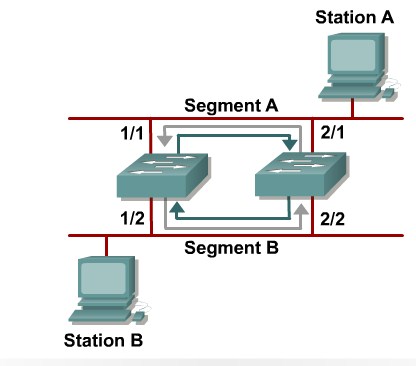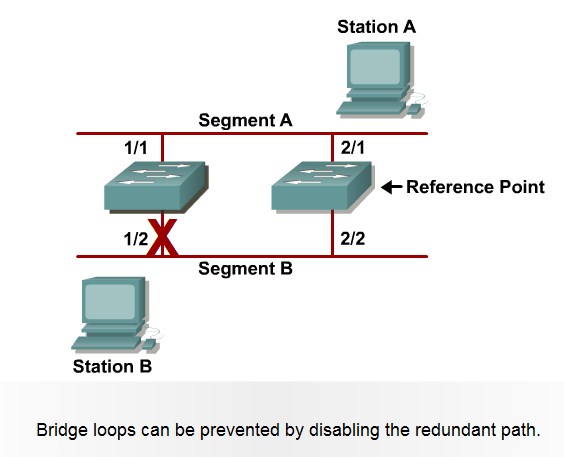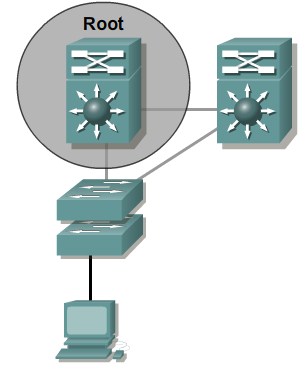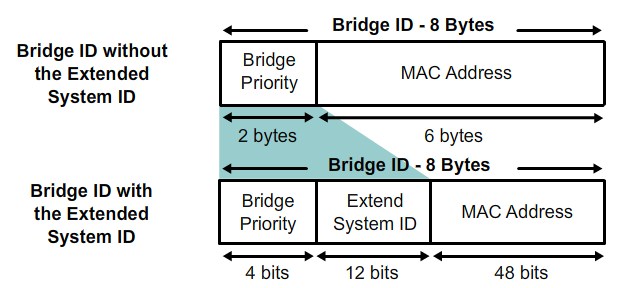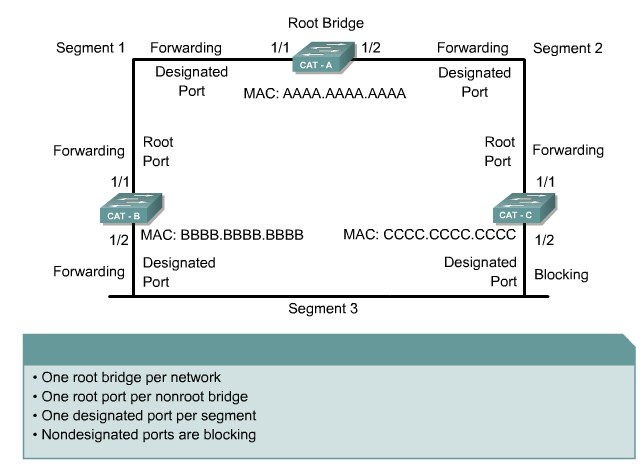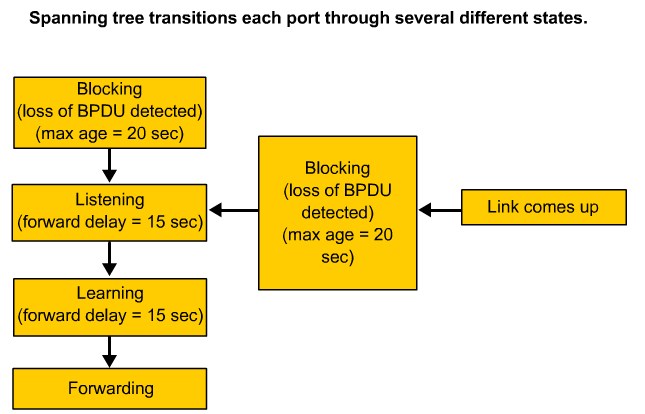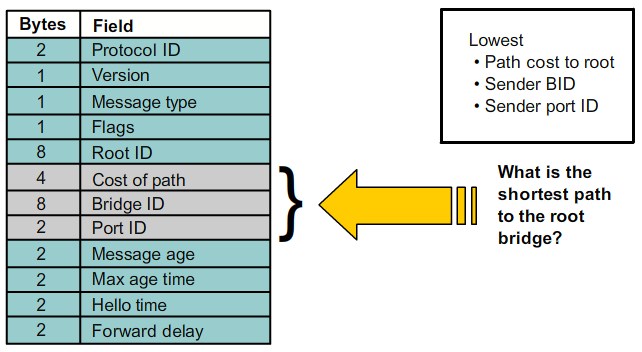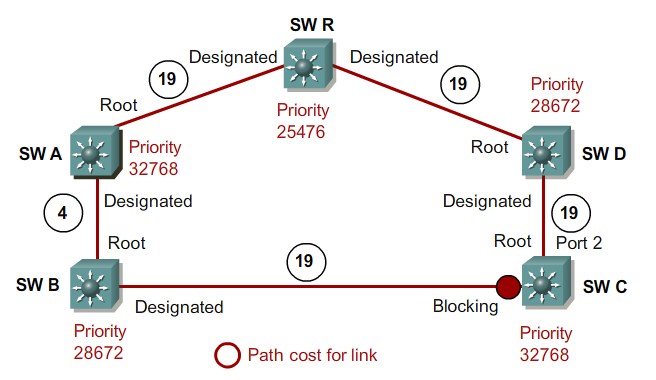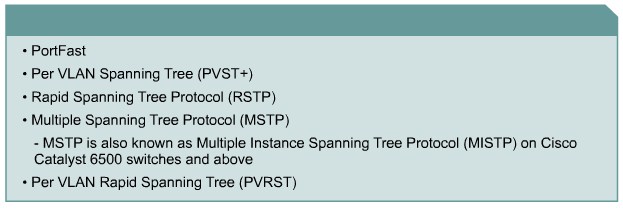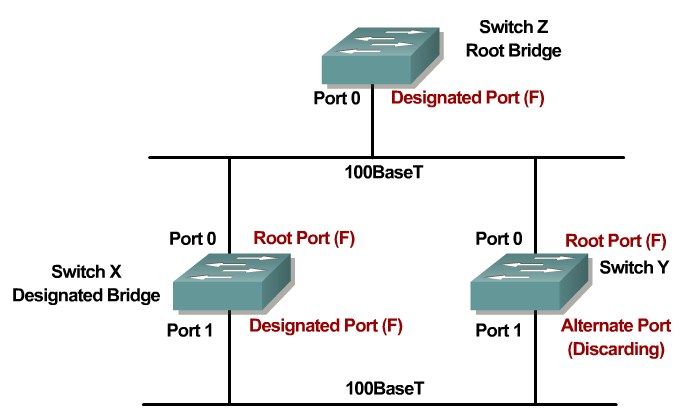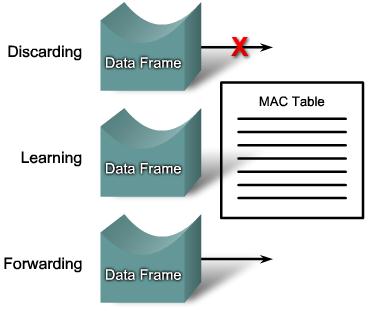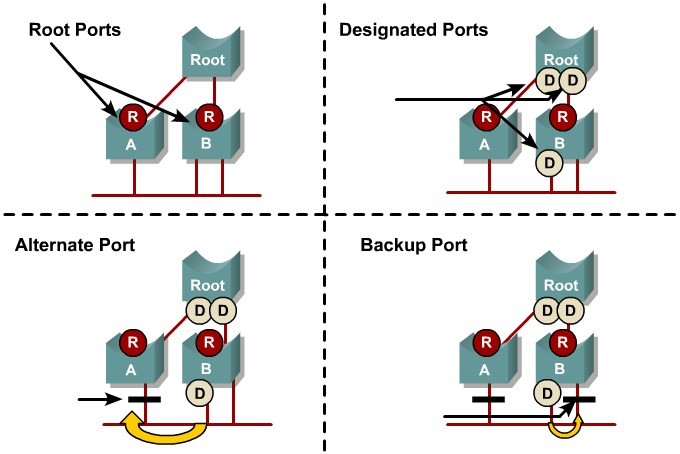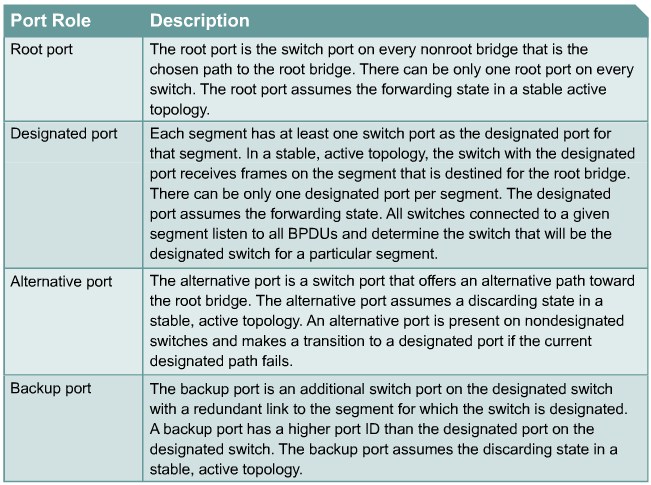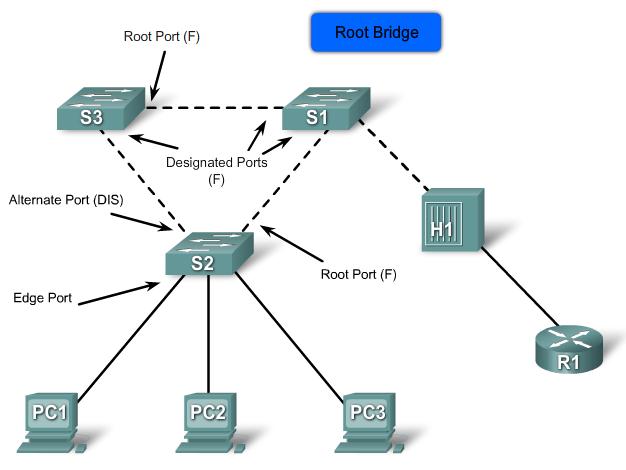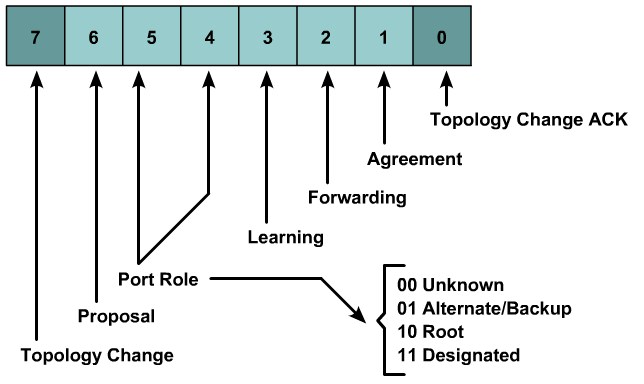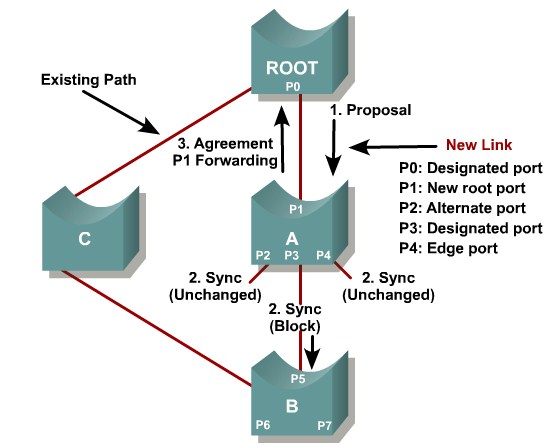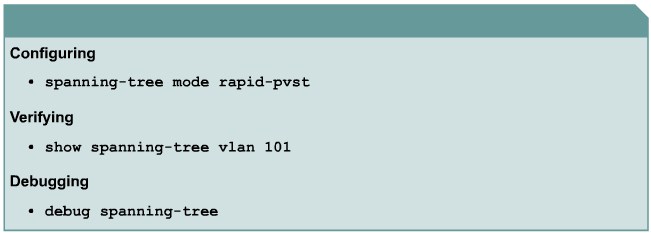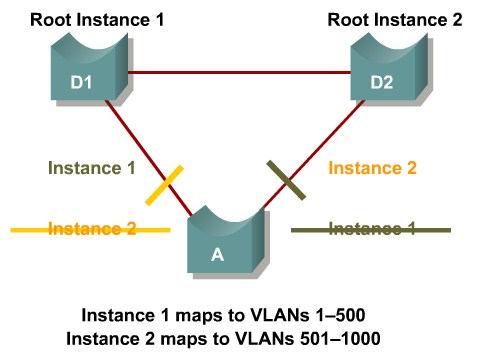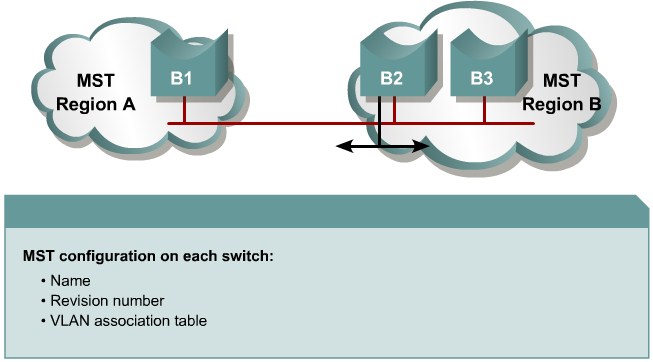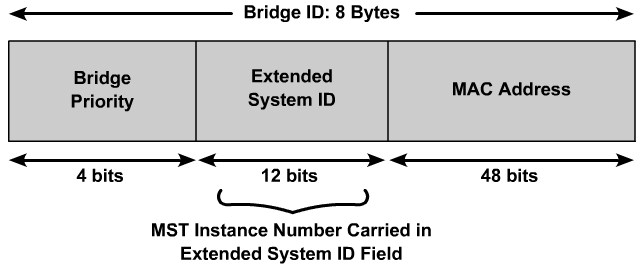Difference between revisions of "CCNP 3 Implementing Spanning Tree"
From Teknologisk videncenter
m (→Examining the RSTP BPDU) |
m (→Identifying the RSTP Proposal and Agreement Process) |
||
| Line 69: | Line 69: | ||
#Switch A sees that the proposal BPDU has a superior path cost. It blocks all non-edge designated ports other than the one over which the proposal-agreement process are occurring. This operation is called sync and prevents switches below A from causing a loop during the proposal-agreement process. Edge ports do not have to be blocked and remain unchanged during sync. | #Switch A sees that the proposal BPDU has a superior path cost. It blocks all non-edge designated ports other than the one over which the proposal-agreement process are occurring. This operation is called sync and prevents switches below A from causing a loop during the proposal-agreement process. Edge ports do not have to be blocked and remain unchanged during sync. | ||
#Bridge A sends an agreement that allows the root bridge to put root port P0 in forwarding state. Port P1 becomes the root port for A. | #Bridge A sends an agreement that allows the root bridge to put root port P0 in forwarding state. Port P1 becomes the root port for A. | ||
| + | |} | ||
| + | ==Describing Rapid PVST+ Implementation== | ||
| + | {| | ||
| + | |[[Image:ScreenShot368.jpg|800px|left|thumb|Image text]] | ||
| + | |} | ||
| + | =Configuring PortFast= | ||
| + | ==Explaining MSTP== | ||
| + | {| | ||
| + | |[[Image:ScreenShot369.jpg|800px|left|thumb|Image text]] | ||
| + | |} | ||
| + | ==MST Regions== | ||
| + | {| | ||
| + | |[[Image:ScreenShot370.jpg|800px|left|thumb|Image text]] | ||
| + | |} | ||
| + | ==Describing the Extended System ID== | ||
| + | {| | ||
| + | |[[Image:ScreenShot371.jpg|800px|left|thumb|Image text]] | ||
|} | |} | ||
Revision as of 18:27, 6 September 2010
Describing STP
Identifying Traffic Loops
Describing the 802.1D Spanning Tree Protocol
Describing the Root Bridge
Describing Port Roles
Explaining Enhancements to STP
Implementing RSTP
Describing the Rapid Spanning Tree Protocol
Describing RSTP Port States
Describing RSTP Port Roles
Explaining Edge Ports
Examining the RSTP BPDU
Identifying the RSTP Proposal and Agreement Process
|
